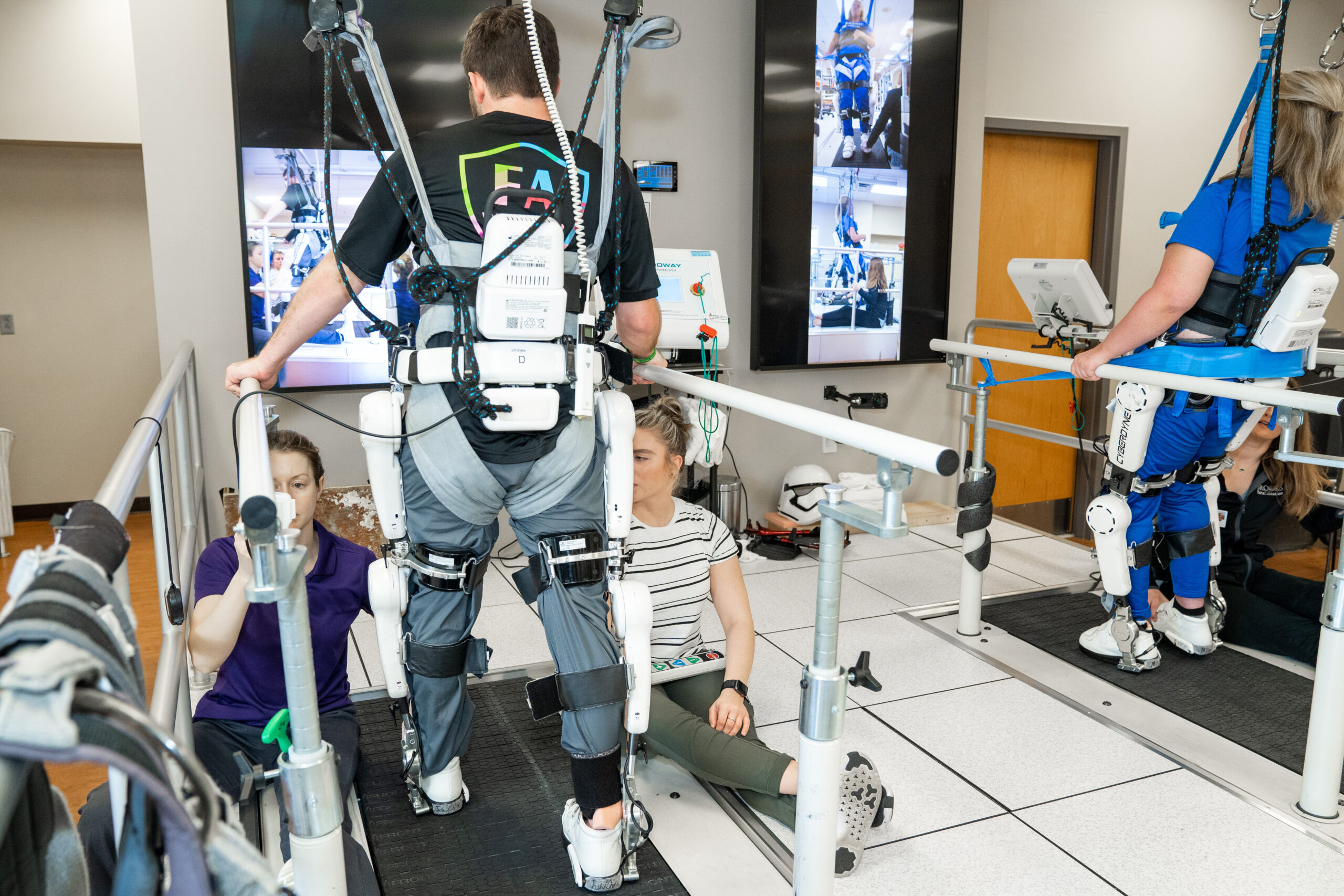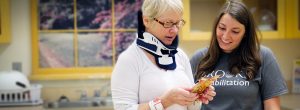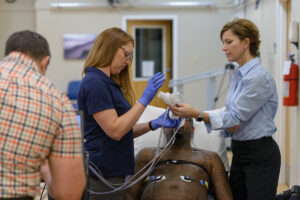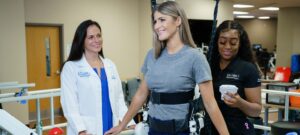Use of Innovative Technology in Brooks Research

Back to physical health resource hub
One area of focus for the Brooks Clinical Research Center (BRCRC) is to test the use of innovative technology to improve rehabilitation care and optimize patient outcomes. This theme is woven throughout the Brooks Research program and is evident in a number of studies exploring technological advances in wearable sensors, virtual reality and devices that may enhance rehabilitation for people with spinal cord injury. At the BRCRC, we believe rehabilitation technology should be more than a new tool to help us do the same things better. Instead, rehabilitation technology should open doors to new ways of practice that were previously not possible and expand our ability to empower patients to achieve the highest level of recovery.
Wearable Technology
Advancements in wearable sensors have resulted in greater feasibility for using this technology in rehabilitation practice. “The application of wearable sensors to movement tracking has emerged as a promising paradigm to enhance the care provided to patients with neurological or musculoskeletal conditions.” (Porciuncula et al., 2018)
Over the last few years, Brooks research has led and partnered with research organizations, as well as industry leaders, to develop and investigate the application of these technologies into rehabilitation. In 2018, Brooks clinicians and researchers conducted a study to examine patient satisfaction and acceptability of a wearable step counter to monitor patient activity as they transition home from a Brooks Rehabilitation facility. Now, in 2020, another project aims to validate and assess the feasibility of using a wearable GPS/activity monitor to quantify number and location of steps in the home versus in the community in stroke survivors.
In addition to using wearable technology to measure walking activity, Brooks researchers and clinicians are exploring the use of wearable sensors to provide clinicians and patients with accurate motion tracking and real-time measurement data during therapy sessions. Furthermore, these technologies provide clinicians with access to information previously not available using traditional assessment methods. Understanding how this information may be used to provide better patient care and improve outcomes is an important step in advancing the field of rehabilitation.
Virtual Reality
Virtual Reality, commonly referred to as “VR,” is a common buzz word in the clinical research space. Virtual reality has quickly emerged as a tool that can be used to help promote patient engagement, motor learning and neuroplasticity for a variety of therapy needs. Along with the rest of the rehabilitation research community, this remains a topic of interest for Brooks as the research department has now conducted and participated in two studies examining the use of “telerehab” to administer therapy virtually, increasing access to rehabilitation services for individuals who may otherwise have limited access to care.
Devices/Robotics for Spinal Cord Injury
Spinal Cord Injury (SCI) research is a fundamental component of Brooks Rehabilitation and in recent years, has gained national attention due to the groundbreaking interventions and mechanisms that are involved in these studies. Examples of these cutting-edge technologies, which are being used in conjunction with innovative rehabilitation approaches, include: Cyberdyne’s Hybrid Assistive Limb (HAL), the Multi-Modal Tongue Drive System (mTDS) to operate power wheelchairs, a Soterix stimulator that delivers non-invasive stimulation to excite spinal neurons and the Go to Altitude®’s Hypoxicator which can adjust the amount of oxygen in the air that a person with SCI breathes. Comprehensively, the ultimate goals of these studies are to improve the health and mobility of individuals with catastrophic injuries. These devices and interventions are considered novel in the research world and can be seen in action right here at Brooks.
Rehabilitation technology is advancing rapidly. Brooks researchers and clinicians are working to ensure patients receive the optimal benefits from these advancements.


